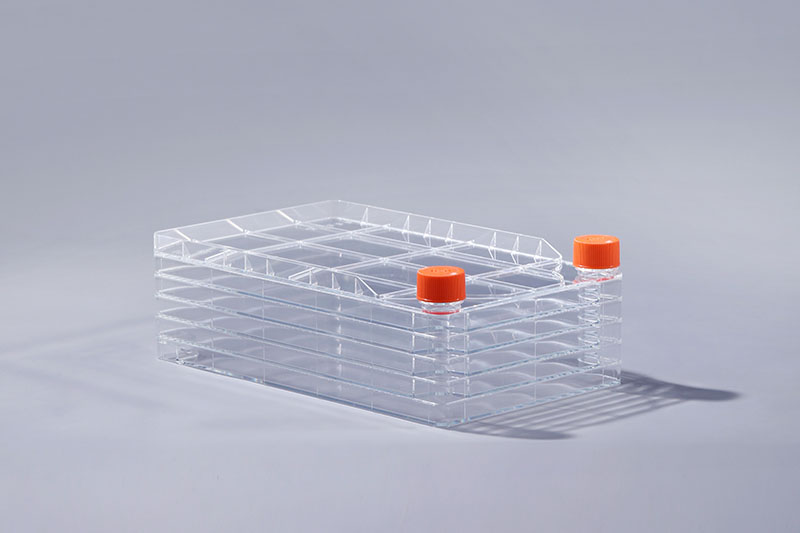সেল কারখানাপ্রধানত ফার্মাসিউটিক্যালস, ভ্যাকসিন উৎপাদন, সেল থেরাপি এবং অন্যান্য ক্ষেত্রে ব্যবহৃত বড় আকারের কোষ সংস্কৃতিতে একটি গুরুত্বপূর্ণ অবস্থান দখল করে। কোষগুলি উত্পাদন পরিবেশের প্রতি আরও সংবেদনশীল, তাই ভোগ্যপণ্যের প্রয়োজনীয়তাও তুলনামূলকভাবে বেশি। জৈবিক সনাক্তকরণ একটি অত্যন্ত গুরুত্বপূর্ণ মৌলিক সনাক্তকরণ, প্রধানত নিম্নলিখিত আইটেমগুলি সহ:
সাইটোটক্সিসিটি পরীক্ষা: কোষ বা রাসায়নিক দ্বারা সৃষ্ট বিশুদ্ধ কোষ-হত্যার ঘটনা যা কোষের মৃত্যুর প্রক্রিয়া হিসাবে অ্যাপোপটোসিস বা নেক্রোসিসের উপর নির্ভর করে না। এই পরীক্ষার মাধ্যমে, কোষ কারখানার কাঁচামালে এমন পদার্থ রয়েছে যা কোষের বৃদ্ধির জন্য সহায়ক নয় কিনা তা বিচার করা যায়। তাদের নির্দিষ্ট ইমিউন প্রতিক্রিয়া তৈরি করে। ক্ষতি, সুস্পষ্ট লক্ষণ এবং লক্ষণ দেখাচ্ছে। এই পরীক্ষার মাধ্যমে, পরীক্ষার পদার্থটি একটি অ্যালার্জেন এবং সংবেদনশীলতার তীব্রতা কিনা তা বিচার করা যেতে পারে।
হেমোলাইসিস পরীক্ষা: হিমোলাইসিস পরীক্ষা হল জাতীয় মানদণ্ডে নির্দিষ্ট ব্যাকটেরিয়া স্ক্রীনিং এবং সনাক্তকরণের একটি পদ্ধতি। সাধারণত স্ট্রেপ্টোকক্কাস, ভিব্রিও, ডিপথেরিয়া ইত্যাদি সনাক্তকরণে ব্যবহৃত হয়। অনেক ব্যাকটেরিয়া হেমোলাইসিন তৈরি করতে পারে, যা প্লেটকে হেমোলাইজ করতে পারে, তাই এই ব্যাকটেরিয়ার চারপাশে একটি হেমোলাইটিক বলয় দেখা দেবে।
সিস্টেমিক বিষাক্ততা পরীক্ষা: পদ্ধতিগত বিষাক্ততা পরীক্ষার শুরু চিকিৎসা ডিভাইস ব্যবহারের সময় পণ্যের সম্ভাব্য প্রতিকূল প্রভাব বা এর উপাদান লিচিং বিবেচনা করা। কারণ এই নির্যাসগুলি মানবদেহের শোষণ, বিতরণ এবং বিপাকের মাধ্যমে পণ্যের সাথে সরাসরি যোগাযোগ না করা টিস্যু বা অঙ্গগুলির ক্ষতি করতে পারে৷ এই পরীক্ষার আইটেমগুলি সবই নিশ্চিত করার জন্য যে কোষ কারখানায় এমন পদার্থ থাকে না যা কোষের বৃদ্ধিকে প্রভাবিত করে, যাতে কোষের স্বাভাবিক বিস্তার নিশ্চিত করা যায়।
Systemic toxicity testing: The starting point of systemic toxicity testing is to consider the potential adverse effects of the product or its material leaching during use of the medical device. Because these extracts may cause harm to tissues or organs that are not in direct contact with the product through the absorption, distribution and metabolism of the human body.
In addition, the biological test also includes intradermal stimulation test and intradermal reaction test. These test items are all to ensure that the cell factory does not contain substances that affect cell growth, so as to ensure the normal proliferation of cells.
The FAI climbed 5.9 percent year-on-year in the first 11 months of 2018, quickening from the 5.7-percent growth in Jan-Oct, the National Bureau of Statistics (NBS) said Friday in an online statement.
The key indicator of investment, dubbed a major growth driver, hit the bottom in August and has since started to rebound steadily.
In the face of emerging economic challenges home and abroad, China has stepped up efforts to stabilize investment, in particular rolling out measures to motivate private investors and channel funds into infrastructure.
Friday's data showed private investment, accounting for more than 60 percent of the total FAI, expanded by a brisk 8.7 percent.
NBS spokesperson Mao Shengyong said funds into weak economic links registered rapid increases as investment in environmental protection and agriculture jumped 42 percent and 12.5 percent respectively, much faster than the average.
In breakdown, investment in high-tech and equipment manufacturing remained vigorous with 16.1-percent and 11.6-percent increases respectively in the first 11 months. Infrastructure investment gained 3.7 percent, staying flat. Investment in property development rose 9.7 percent, also unchanged.
 English
English



















































